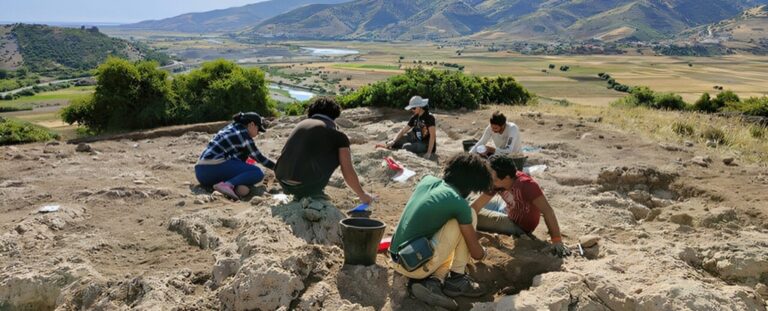
In a groundbreaking discovery that could change the way we understand the ancient history of Africa, archaeologists working in Morocco have unearthed new evidence that suggests a far more complex and diverse prehistoric past than previously imagined. The findings, which include ancient tools, fossils, and cave art, not only challenge long-standing assumptions about early human development but also shed new light on the interactions between ancient African populations and the wider world.
The excavation took place in the Rif Mountains of northern Morocco, where researchers from an international team spent several years combing through layers of sediment and rock. Among the items uncovered were sophisticated stone tools that date back over 300,000 years, making them some of the oldest of their kind ever found in North Africa. These tools, crafted with remarkable precision, suggest a level of technological advancement that was previously thought to be unique to early human populations in East Africa.
In addition to the tools, the team discovered fossilized remains of several species of ancient mammals, some of which had previously been thought to have been extinct in this region. The fossils indicate that Morocco was once home to a more diverse range of animal life, which could provide valuable insights into the climate and ecosystems of prehistoric Africa.
Perhaps most intriguing of all, however, was the discovery of cave paintings deep within the mountain caves. These paintings, which appear to depict both animals and human figures, are believed to be at least 30,000 years old, and they offer a glimpse into the spiritual and cultural practices of the early African peoples. The level of artistic sophistication suggests that the early inhabitants of Morocco had developed complex cognitive abilities long before the rise of the first major civilizations.
The findings in Morocco have the potential to significantly rewrite the history of the African continent. For decades, the prevailing view of Africa’s prehistoric past has been shaped by the belief that early human development and cultural advancements occurred primarily in East Africa, particularly around the Great Rift Valley. This theory, known as the Out of Africa model, holds that modern humans (Homo sapiens) evolved in East Africa and then migrated to other parts of the world.
However, the new discoveries in Morocco challenge this model by suggesting that North Africa may have played a much more significant role in the development of early human societies. Some experts now believe that Morocco could have been a key hub for human migration and cultural exchange, serving as a crossroads between the northern and southern regions of the continent.
The tools and fossils uncovered in the Rif Mountains imply that ancient humans in Morocco were not only capable of sophisticated toolmaking but also had a deep understanding of their environment and the animals around them. This would suggest that early African societies were far more interconnected than previously thought, and that North Africa may have been a center of innovation and cultural exchange long before the rise of Egypt’s ancient civilization.
Moreover, the cave paintings provide evidence of a complex belief system and a rich cultural life among early humans in Morocco. These artworks could reveal important details about the symbolic and spiritual practices of prehistoric African peoples, offering a new perspective on the development of early human societies.
The discovery has profound implications for the field of African archaeology, which has traditionally been dominated by studies of the Great Rift Valley and other East African sites. While these regions remain crucial to understanding human evolution, the new findings in Morocco suggest that archaeologists need to expand their focus to include other regions of the continent, particularly North Africa, which has been somewhat neglected in past research.
The implications of this discovery are also felt beyond the academic world. For centuries, the history of Africa has been marginalized in global discussions of human development, with much of the continent’s ancient past overlooked or misrepresented. The new findings in Morocco could serve as a catalyst for a broader reassessment of Africa’s historical and cultural contributions to the world, highlighting the continent’s role as a cradle of civilization long before the rise of European and Asian empires.
Moreover, the discovery challenges the idea that Africa’s history is solely defined by colonialism and its aftermath. Instead, it underscores the continent’s long and rich history of innovation, adaptation, and cultural flourishing. The more researchers learn about Africa’s ancient past, the more they are likely to uncover about the diverse and complex societies that existed across the continent long before the arrival of colonial powers.
As researchers continue to analyze the findings from Morocco, there are many more questions to be answered. What can the cave paintings reveal about the spiritual beliefs of these early peoples? How did the technological advancements in Morocco compare to those in other parts of Africa? And perhaps most importantly, how did these ancient societies interact with the wider world, particularly with early human populations in Europe and Asia?
In the coming years, the discovery in Morocco is likely to spark further archaeological expeditions in the region, with researchers hoping to uncover even more evidence of early human life in North Africa. There is also growing interest in using advanced technologies, such as DNA analysis and carbon dating, to learn more about the people who once inhabited the area and their role in the broader narrative of human history.
In conclusion, the recent discovery in Morocco has the potential to revolutionize our understanding of Africa’s prehistoric past. It challenges traditional narratives about early human development and offers new insights into the complexity and diversity of ancient African societies. As more discoveries are made, we may find that the history of Africa is far more intricate and interconnected than we have ever imagined.

